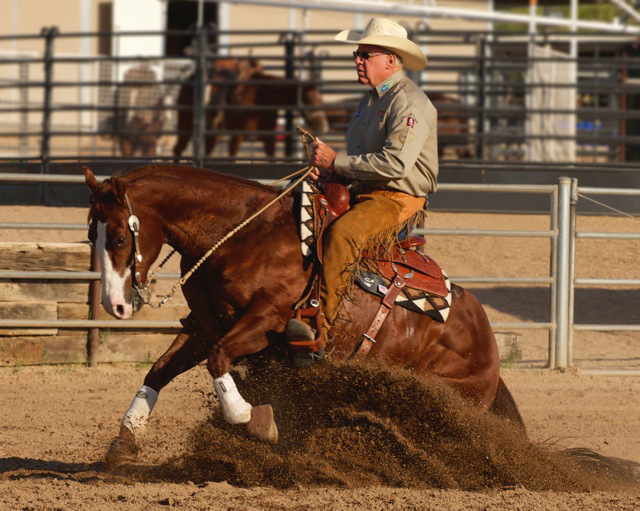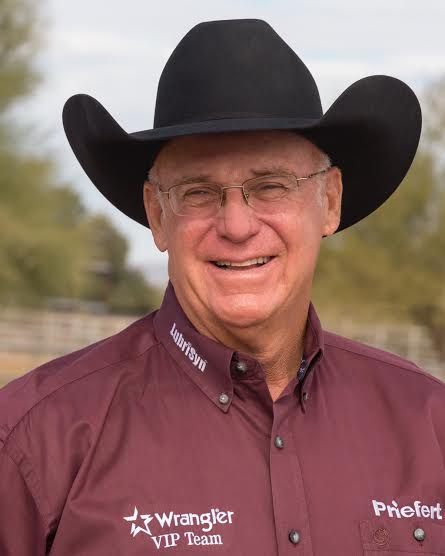The 5 Basics Every Horse Should Know
by Al Dunning
Question: When training a horse to do a particular task, how long will you continue to use a certain approach if it doesn’t appear to be working?
Answer: Horses learn from repetition—good or bad. If you are using proven techniques, many times you should stick to them until the horse catches on rather than changing or adding more pressure. If you add additional approaches to supplement your current direction, you can get further confusion and/or actually increase the learning curve. Horses all learn at different rates so patience is key to positive training.

Question: What fundamental basics do you train all your horses? What are the first things you train?
Answer: The first thing I teach is to go forward. From there I can continue to progress into the 5 Basics that all well trained horses should have. These are: Go forward readily; turn freely right and left; stop; back easily and collect by listening to leg cues, rounding up and being light.
Question: How long should it take, approximately, for the average horse to learn the 5 Basics?
Answer: The 5 Basics are important components for any horse to learn, know and also maintain. With this in mind, I am always working on them as there are many degrees to each component, from beginner to advanced. I think about each one when I warm-up/tune-up my horse. So, I guess my answer is that I am always teaching or maintaining all or one of the 5. Insert al basics
Question: Do you believe that it is easier to successfully train a lazier, slower horse or a more sensitive, faster horse?
Answer: A horse with feel and sensitivity is much easier to train than a dull, lethargic animal. They respect you more, learn quicker and will perform more maneuvers than one that is lazy. Not unlike humans!
Question: Do you spend a lot of time desensitizing a young horse? Conversely, how easy is it to sensitize one that is dull or lazy?
Answer: Again, it is easier to train a light, sensitive, horse that has “feel” than a dull, lethargic individual. It is easier to train a horse that is willing to learn, than a horse that has been taught to have defense mechanisms due to wrong/improper handling. In the case of the latter, you must start over with the basics and get the horse’s trust and proper respect before moving forward again.
A dull, pushy horse must first regain a sense of who is running the show. Doing some ground work and creating a safe space between you and your horse is critical in this situation. Getting the horse to approach you and go away, at your command, is the goal. This process will include developing trust, respect, attention to commands and understanding personal space.
When you are talking about sensitizing a dull horse, it goes back to the overall attitude of compliance to requests. Work on the basics and go at a pace that suits your particular horse. I like using the end of my reins or a crop rather than a spur to encourage proper performance. With all horses, logical, methodical training, tailored to the individual, will always produce the best results.

Al Dunning of Scottsdale, Arizona, is one of the most respected horsemen in the industry. Al and his students have garnered 48 world and reserve world championships. He has held numerous national leadership positions and earned multiple honors including induction into the AzQHA Hall of Fame. His 50+ years of experience as a professional trainer has led him to produce books, DVDs, clinics, Team AD online mentoring, and AD Tack, selling all the tack he uses as well as his books and videos. Al’s ability to reach people comes from his love of horses and out of respect to the mentors in his own life. For more information, visit https://www.aldunning.com or www.aldunningsadtack.com.





dear Mr. Dunning.
A good friend of mine is trying to help me teach my horse and I , but he is far away. He recommended watching your videos or talking to you. His name is Gerald Graves from Kansas. I have a horse that was rescued from the kill pen in oklahoma and is not mean, just fearful. I have spent months going slow, I have no roundpen as of yet. He was afraid of people so he kicked – not good. So i had him in a long run up the pasture alone for a few months and just started handing him grass. progressed to putting the halter on him and walking him around. He tended to get a little pushy, he’s better at it now. he lets me brush him all over and spray him down with bug spray. I am able now to pick up front feet easily and pick them out, put hoof dressing on them and they have been clipped. but the back feet are another story. I can brush his back legs and butt, he loves that lol, and now i can put my cupped hand around his pastern and ask to lift up. I’m afraid to hang on to it though. I was kicked the 4th day i had him when he tripped on the lead, and i dontknow how to calm my heart down to get that close to his back feet. Where to position myself. Ive watched a few videos, but its hard to remember how when i go out there after watching it.
I am near springfield missouri – can you help me please. He is not a mean horse – just a bit afraid.